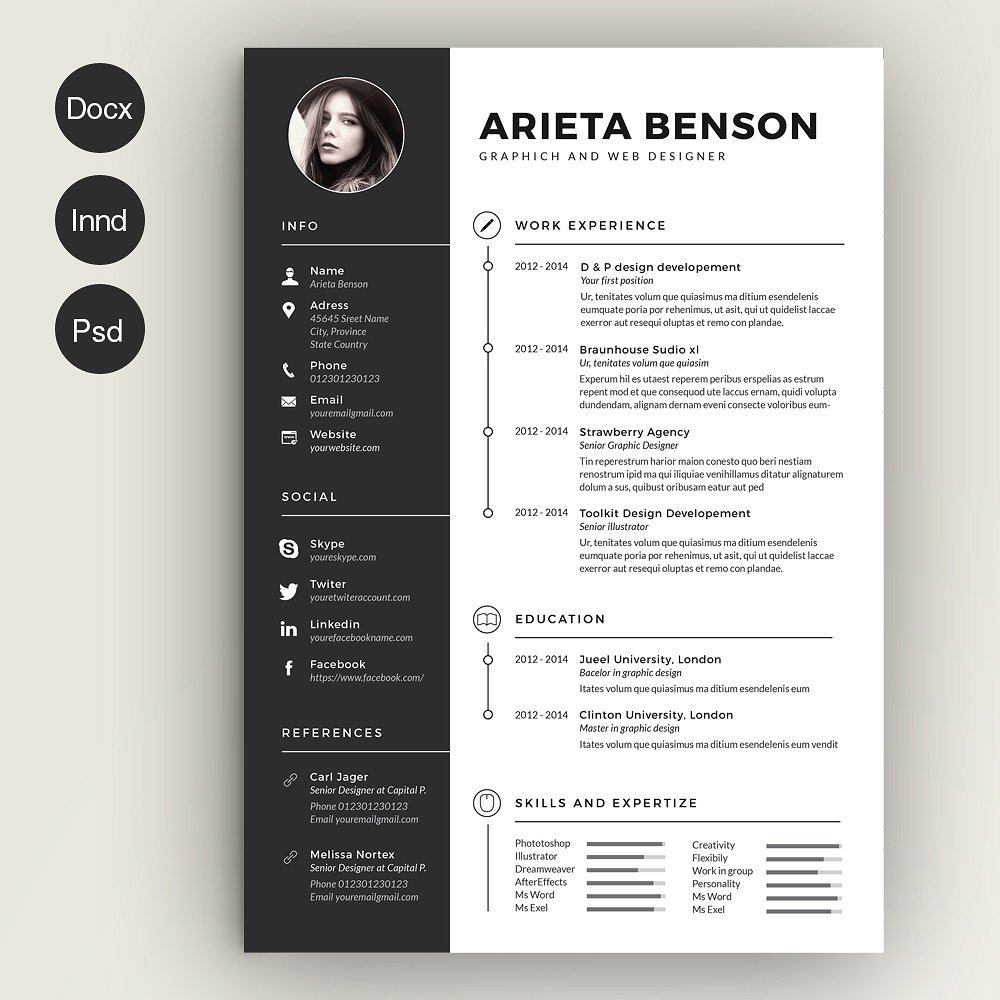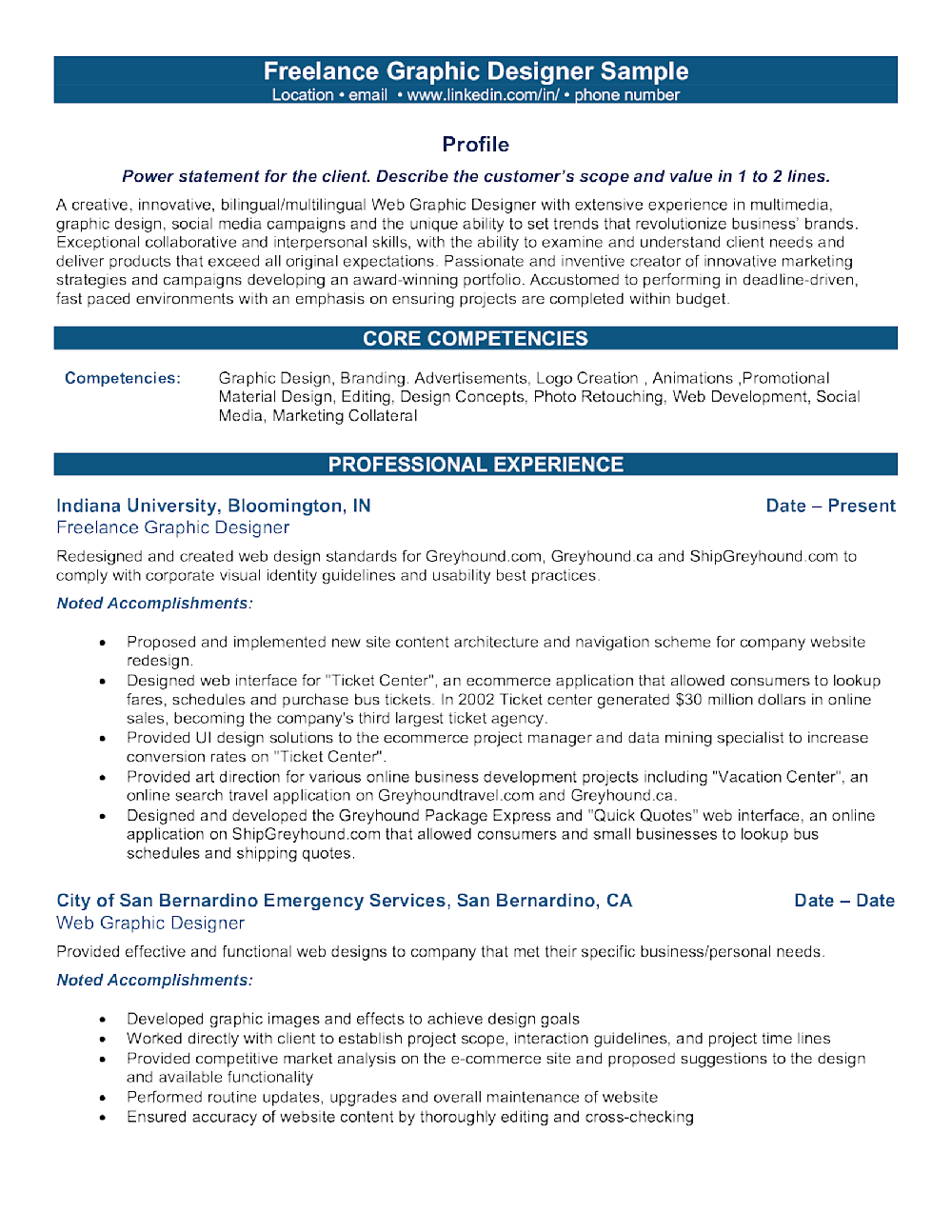Should Graphic Designers Use a Creative Resume

There is an ongoing debate about whether folks in creative fields should use a creative resume. Of course, you want to stand out from the crowd, which is how the misconception that you should use a creatively designed resume originated.
Yes, there are some instances when having a creative resume can serve you well. However, for the most part, it’s advisable that you have a regular MS Word, text-based resume for a couple of reasons:
You have to get past the ATS
Text-based, reverse-chronological-type resumes are what hiring managers expect
Remember, the hiring manager is not hiring you based on the aesthetics of your resume. They're looking at your experience, education, skills, achievements, and relevant qualifications.
In this article, you’ll learn the pros and cons of using a creative resume as a graphic designer – or other creative professional. Don’t worry, though! We’ll also take a walk on the wild side and talk about the times when you can use a creative resume.
We have to answer a couple of basics first, though.
What is the purpose of a resume?
Many people’s gut reaction to this question is that a resume is for getting a job. That’s not entirely accurate. The sole purpose of a resume is to impress a hiring manager so that you get a call for an interview. It’s the interview that gets the job.
Your resume is a marketing tool, and you are the product it’s trying to sell. It should sprout legs, stand up on the hiring manager’s desk, and shout, “Hey, read me! I’m the best.” It’s this need for a great first impression that dictates the format your resume should take.
When you put your resume together properly, it tells a story of career progression and achievement in a way that demonstrates your suitability for a particular role. The hiring manager who is reading your resume – well, skimming through your resume – is looking for the value you’ll add to their team.
Since you’re trying to prove that you can fulfill the needs of the employer, you’ll want to showcase more than your design skills. In fact, there’s a lot more to being a Graphic Designer than just designing stuff. You have to get along with others, solve problems, liaise with clients, pay attention to details, and leverage what you know about design principles to meet needs. Just having a pretty resume won’t tell those parts of your career story.
What is a creative resume?
When we talk about creative resumes, we’re referring to resumes that are visually appealing with pretty designs, unconventional layouts, and unique elements (e.g., icons, photos, slider bars). In fact, a simple image search on the Internet of the phrase ‘graphic designer creative resume’ returns well over 70 million results that look something like this:

Should a Graphic Designer have a creative resume?
Unfortunately, this type of resume is not suited for most job applications. Let’s talk about why.
The ATS
You’ve likely heard of a thing called the applicant tracking system, or ATS. It’s the resume-scanning software that companies use to weed out candidates. It’s truly a thorn in the side of most job seekers, including Graphic Designers with creative resumes.
These systems automatically scan your resume to determine if you're a good match for the position. It does this by parsing your resume for keywords, experience, education, and other important factors.
Creative resumes with fancy designs, colors, graphics, and fonts have a difficult time getting read by some ATS scans. The computer is expecting to scan text – not graphics. If you submit a resume that has a creative format, you risk the ATS scoring you as a bad match or, worse, rejecting your resume because it reads your design features as a corrupt file.
Expert Tip
You can check how your resume looks to an ATS scan by using Zipjob's free resume review tool.
2. Hiring managers prefer a traditional resume format
Most hiring managers prefer a traditional resume format. When they're looking at hundreds of resumes per day, the last thing they want to come across is something that looks like an art project. It's often hard for a hiring manager to look at a creative resume and quickly find the information they need, and when that happens, the resume is often rejected.
There are three resume formats for you to choose from for your Graphic Designer resume:
Reverse-chronological
Functional
Hybrid
When you stick to one of these tried-and-true resume formats, not only will your resume get past the ATS, but the hiring manager will know exactly how to locate the information they want to see. Remember, we mentioned that employers are skimming through resumes? Well, when they get a recognizable format, you make it easier for them to learn about your career achievements.
If they’re looking at a creative resume, it takes an extra second or two to find where the relevant details are located. It may not seem like much, but that takes time away from them learning how great a candidate you are.
3. Content over creativity
When you present a creative resume for a new job, the efforts that went into the design of it probably took precedence over the content. This is not only problematic for Graphic Designers but also for hiring managers who really care about your skills, experiences, and achievements.
For example, if you’re using slider bar graphics next to each of your skills to show your level of expertise, those slider bars are taking up valuable space that you could’ve used to add more skills.
On top of missing out on the opportunity to add the right content to a creative resume, you also have a harder time tailoring your resume to each position. Customizing your resume with the right keywords from a job description is vitally important for getting past the ATS.
Editing graphics, images, or even just text is usually a hassle with a creative resume because the "look" is so important to the document. You risk not including all of your relevant experience and appearing unqualified.
4. Unprofessional
Whether or not you're targeting a job in graphic design, you need to make a professional first impression. Although a creative resume could look pretty awesome, it just doesn't have a professional feel to it. A lot of prospective employers may find that your resume gives off a gimmicky feel, which could lead to your candidacy not being taken seriously. Is that really the first impression you want to make?
What Type of Resume Should a Graphic Designer Use?
A graphic designer should use a traditional resume format, just like everyone else.
Instead of making your resume act as your creative portfolio, you should include a link to your online portfolio with examples of your work. Include your portfolio URL in your contact section or as its own section.
Here is a good example of a resume for a graphic designer:

Expert Tip
View 200+ more professional resume samples for all industries, along with a guide to writing resumes from our career experts.
“So, I can never have a creative resume?”
This entire article has been devoted to informing you that creative resumes are bad news. As with anything in life, there is rarely an absolute answer to any question. The same holds true for having a creative resume.
You can absolutely have a creative resume if …
You are attending a networking event
You are sending your resume directly to a prospective employer (i.e., a human being)
Networking
There will be – or at least should be – times when you network with like-minded professionals to grow your network, collaborate on projects, or search for new jobs. In these cases, a creative resume can be a great icebreaker to get a conversation started. The same concerns about lacking relevant content are lessened because you’re there, in person, to fill in any gaps that may not have made it onto the page.
It’s a good idea, even in the case of networking, to have both versions of your resume. The person you hand your creative, ice-breaker, resume to may want to see your real resume. When you’re able to give both, you exude professionalism and let people know that you’re always ready for whatever may come up.
Emailing a person
You may find yourself reaching out to potential employers to inquire about job opportunities. This could be another useful opportunity to use a creative resume. In actuality, it’s a smart move on your part as a Graphic Designer to use a creative resume first and then follow up with a professional resume. It gives you the chance of getting your name in front of the hiring manager more than once.
There are some critically important steps to follow if you decide to do this with your Graphic Designer creative resume.
Subject line: Mind the subject line of the email you send, remembering that the ‘delete’ key is very conveniently located on the recipient’s keyboard.
Introduction: Use the body of the email as a way to introduce yourself and let the prospective employer know why you’re reaching out to them. Think of it as a mini cover letter.
Attachment: Include your Graphic Designer creative resume as an attachment with a filename that is readable and can be easily located should the hiring manager want to contact you in the future.
Follow-up: Wait about a week and send a follow-up email with your professional resume to emphasize how your experience, skills, and achievements align with what they need in a Graphic Designer.
In all interactions you have with a person receiving your resume, it’s critical that you maintain a level of professionalism in your communication. If you do it right and strike the correct balance between creativity and professionalism, you’ll be able to show that you have what it takes to succeed on their team.
Winning interviews is the goal
It doesn’t really matter whether you believe creative resumes are okay or are a paunch advocate for professional resumes; the real key to success is making the best first impression. When you clearly communicate the value you’ll add to a new team by highlighting the right skills, qualifications, and career achievements, you’ll increase your chances of winning an interview.
Key Takeaway
When applying for a new job, use the reverse chronological format
Creative resumes do not make it past the ATS
Hiring managers expect to see a traditional resume
Use a creative resume when talking directly with a human, but back it up with a professional resume
Emphasize content over design
Tailor your resume to each job with the right keywords
Ultimately, the decision to use a creative resume should be based on how you’ll use it, what hiring managers expect, and the requirements of the job you’re applying for.
Good luck with your job search!
This article was originally written by Steve Guntli and updated by Marsha Hebert.
Recommended reading:

Written by
Marsha Hebert, Professional Resume Writer
Marsha is a resume writer with a strong background in marketing and writing. After completing a Business Marketing degree, she discovered that she could combine her passion for writing with a natural talent for marketing. For more than 10 years, Marsha has helped companies and individuals market themselves. Read more advice from Marsha on ZipJob's blog.
